
Words and Photos by Yrene Dee, Lumby (British Columbia, Canada).
Yrene is the founder of BackcountryCanadaTravel.com. She was born in Switzerland, lived and worked on different continents and travelled the world before she settled in Canada. She is an entrepreneur, wilderness nut, and animal lover who prefers off-the-beaten-track places. Follow Yrene on Twitter @backcountrycana, Facebook @ backcountrycanada, and Instagram @backcountrycanadatravel.
Here I am, back again, driving the Silver Trail gravel highway on the way to Keno City. A small dot on Google Maps marks the existence of this tiny, nearly forgotten, old Gold Rush town in the mountains of central Yukon, northern Canada.
Despite its name, Keno City is the smallest community in the Yukon, hidden far off the beaten track. Not many travellers venture this way. To get to this old historic mining town you have to take the Silver Trail (Yukon Highway 11) at Stewart Crossing and travel 110 kilometres (68 miles) to the end of the road.
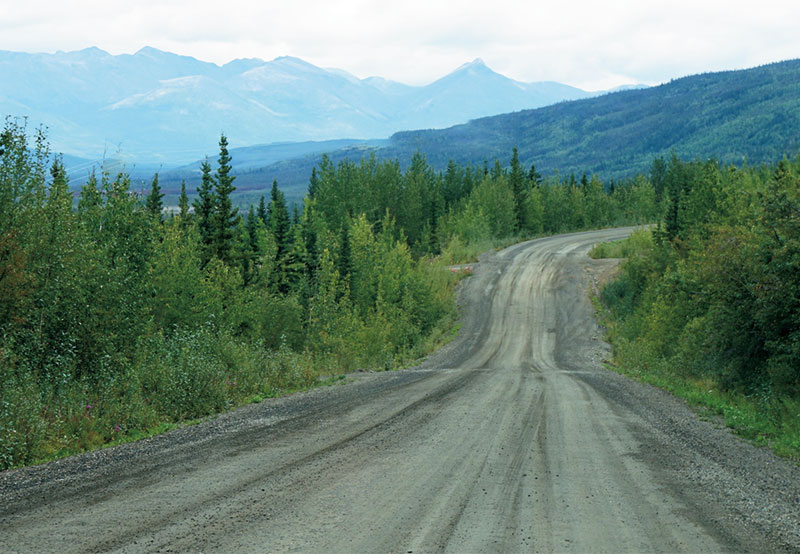
Two years ago I travelled on the Silver Trail with destination Keno City in mind. Unfortunately, I never made it past the village of Mayo, half-way down the Silver Trail. I stopped in front of the historic Binet House because I wanted to check out the interpretive information panels and the geology and mining display.
When I reached for my purse leaving the car, it was gone. I suddenly realized that I left it behind at the Pelly Crossing Selkirk Centre where I filled up my gas tank and used the washroom, about 120 kilometres (75 miles) down the road. In big shock and panic, I remembered my purse with all my ID, bank cards and money hanging on a hook in the women’s washroom.
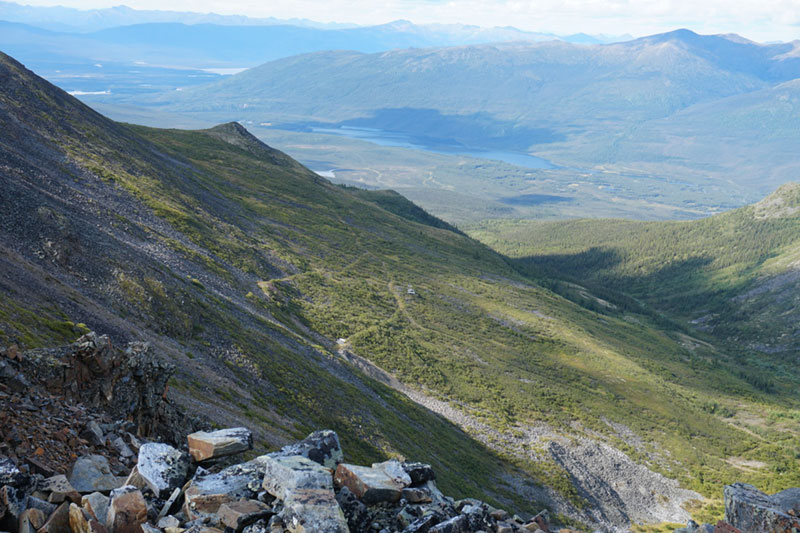
Imagine me, all alone on a road trip in the middle of Yukon’s wilderness, nearly 3,000 kilometres (1,864 miles) from home without any ID and money. I turned around as quickly as I could, speeding down the dusty Silver Trail and North Klondike Highway back to Pelly Crossing. And there my purse was, waiting for me to pick it up at the counter.
Believe me, I was a happy camper that night. But because of my purse, I never made it to Keno City on that trip and continued up to Dawson City instead. Lesson of the day: never keep all your valuables in the same place when you travel.
Now, two years later, on this warm, sunny Yukon morning in late August, I am back on the Silver Trail heading for Keno City. The winding road from the Stewart River Bridge cuts through the traditional territory of the Na-Cho Nyäk Dun First Nation. I stop for a short break at the Devil’s Elbow, a prime moose calving site and protected habitat, and hike the trail to the viewing lookout over the wetland.
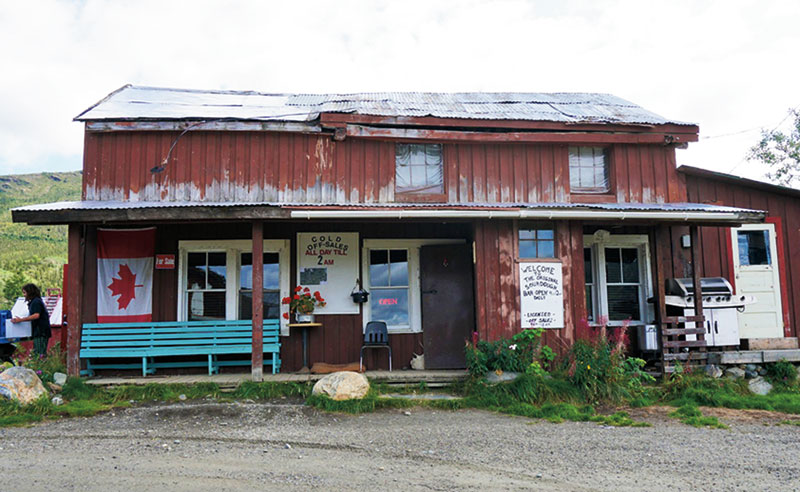
Back at the Binet House in Mayo, a village of 496 people, I take a quick tour of their display and pick up information pamphlets about the area. Mayo holds the record for extreme temperature range. Imagine living where temperatures are recorded from +36 degrees Celsius (100°F) and -62 degrees Celsius (-80°F).
Shortly after Mayo, the pavement stops and the Silver Trail turns into a gravel road. Yukon’s gravel highways and their potholes and sagging shoulders are not new to me. I can easily imagine the condition of this road and the difficulty of keeping it maintained during extreme weather conditions.
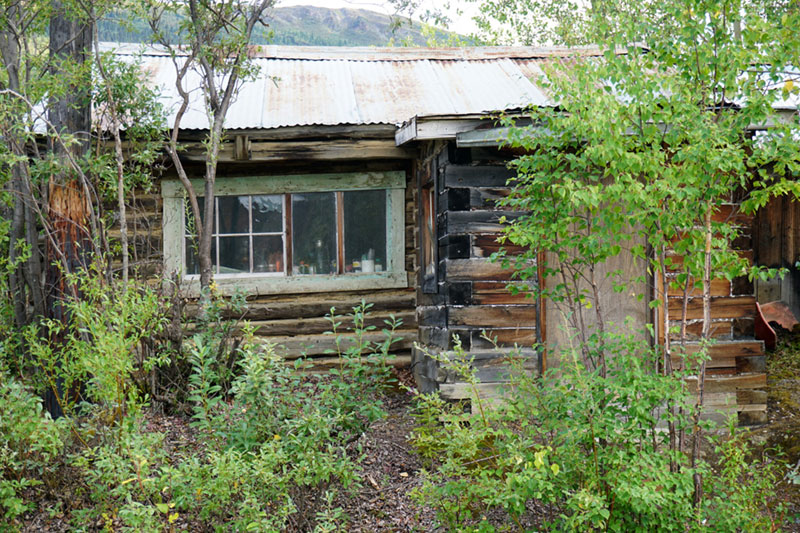
Continuing along the gravel highway I pass idyllic, crystal clear lakes and large areas of marshland, home to an abundance of beautiful water birds. The “drunken forest” at Halfway Lakes reminds me of the permafrost below us. A breathtaking view of Mount Haldane only lets me guess what mountain hiking would be like in this lonely, wild land.
Just a few kilometres before arriving in Keno City, I pass the old silver mining town of Elsa. Elsa was the townsite for United Keno Hill Mines until it shut down in 1989. Along the hills, a few old buildings are scattered reminding of times gone by.
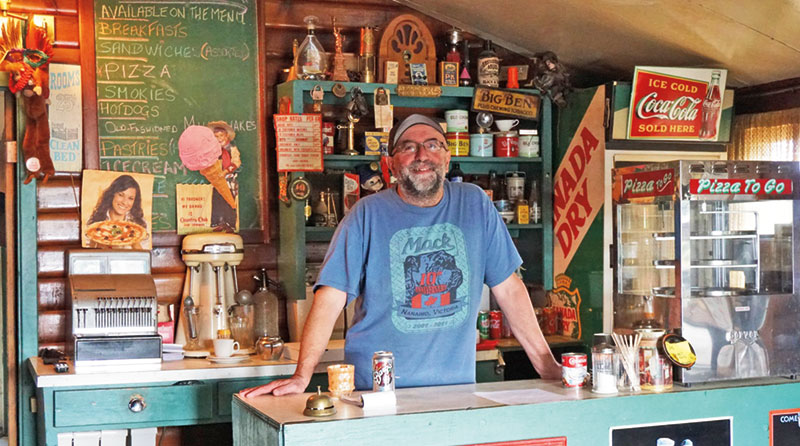
Continuing down the dirt road I quickly approach Keno City which means that I have finally reached the end of the Silver Trail. Within the flash of an eye, I feel like being transferred into another world. I fell in love with this historic frontier town at first sight—it’s like no other place I’ve ever been to.
For a short time, Keno was part of Yukon’s Gold Rush. Later, silver was discovered which transformed Keno into a booming mining town in the early 1900s. Keno City experienced the boom and bust cycles of a mining town for decades. When the Keno Hill mine closed in 1989, many residents left. The ones that stuck around are the ones that make Keno so special today.
The mining museum tells the stories of the people who mined in the Silver Trail region and is Keno City’s landmark. It is surrounded by a collection of colonial buildings along the dusty streets. Keno is home to a maximum of 20 residents, in summer that is. In winter there are only a few hard-core locals left.

The old-timers who stay around don’t want to turn their backs on this unique lifestyle. No matter how hard life is and the many sacrifices they have to endure to stay here, Keno beats the city life.
Keno has two rustic bars for its tiny population, a hotel housed in a historic building and a couple of other options for accommodation.
While exploring the town I notice the sign for Keno Hill, an 11 kilometre (6.8 mile) drive to the famous signpost on top of Keno Hill. How can I resist! Here I am, off on another epic drive maneuvering steep switchbacks around boulders and big rocks to get to the famous signpost on Keno Hill at 1,849 metres (6,066 feet).
I am rewarded with a breathtaking panorama overlooking the mountain range and the mining ruins along the hillsides.
I stayed at the Keno City campground beside Lightning Creek that night. When the sun finally set before 11 pm my traveller’s heart was content once again.
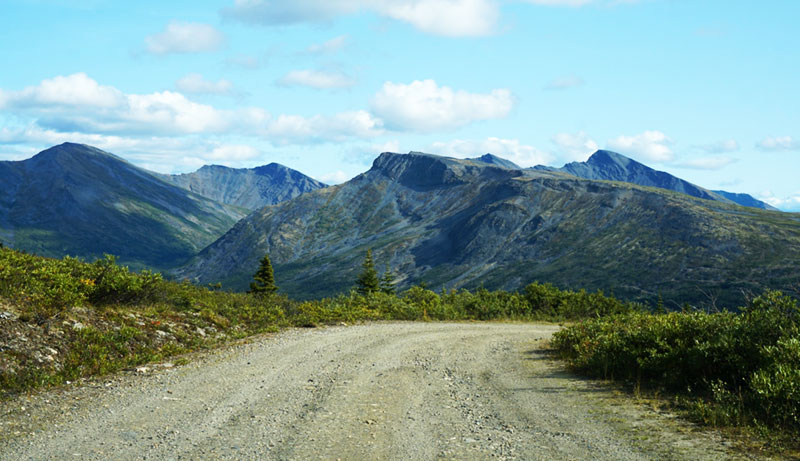

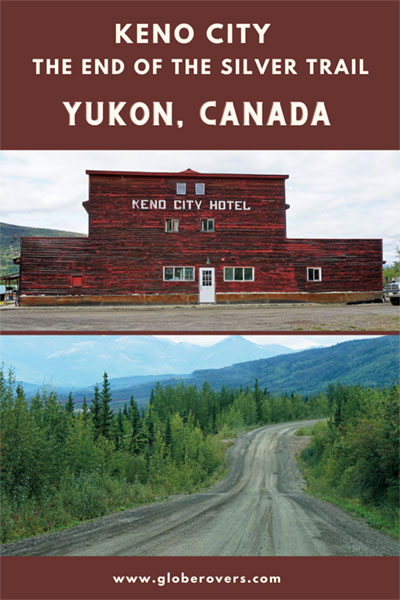
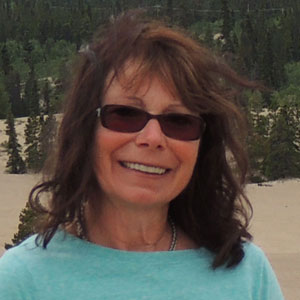
Yrene is the founder of BackcountryCanadaTravel.com. She was born in Switzerland, lived and worked on different continents and travelled the world before she settled in Canada. She is an entrepreneur, wilderness nut, and animal lover who prefers off-the-beaten-track places.
